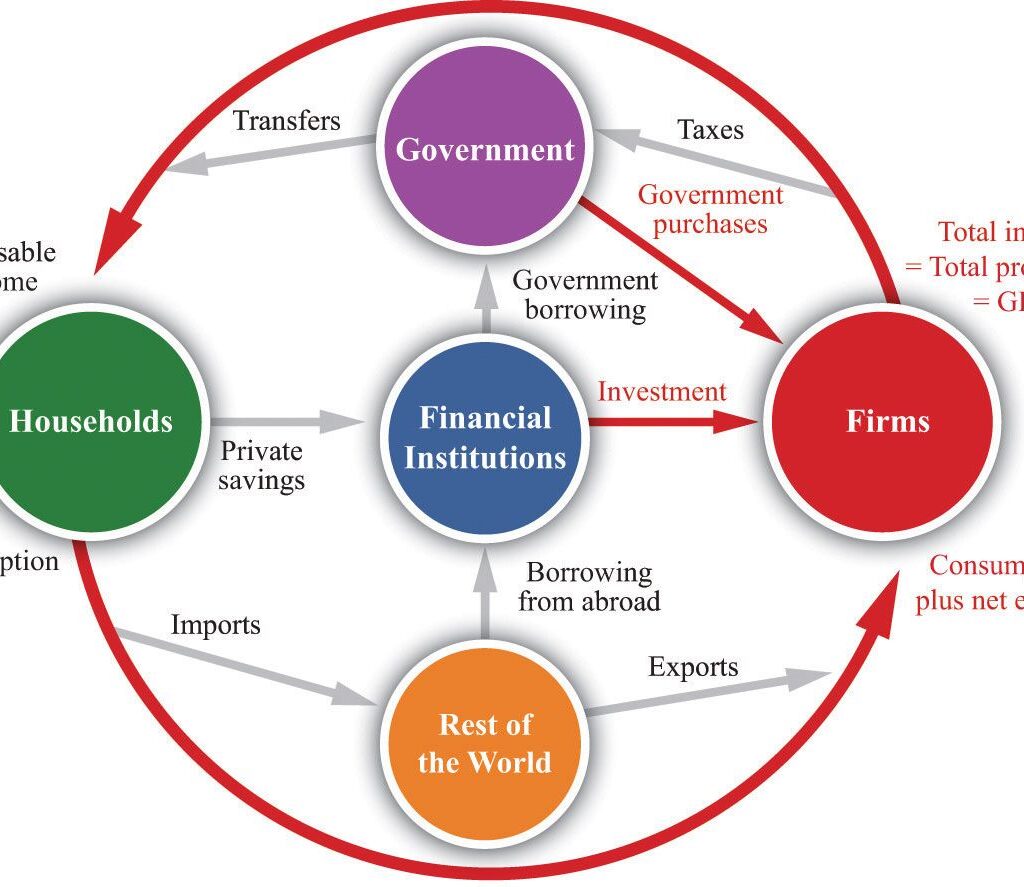This rings particularly true in the realm of what is virtual leasing and how does it work?, where the concept of virtual leasing has emerged as a game-changer, revolutionizing the way properties are leased and rented. But what exactly is virtual leasing, and how does it work? In this comprehensive guide, we’ll delve into the intricacies of virtual leasing, exploring its definition, mechanics, and the myriad benefits it offers to both landlords and tenants alike.
Virtual leasing, at its core, refers to the process of leasing or renting a property through digital channels, without the need for physical interaction between landlords and tenants. Unlike traditional leasing methods that often entail in-person property tours, paper-based documentation, and face-to-face negotiations, virtuals leasing leverages technology to streamline the entire leasing process, making it more convenient, efficient, and accessible for all parties involved.
How Does Virtual Leasing Work?

The mechanics of virtual leasing are simple yet sophisticated, relying on an array of digital tools and platforms to facilitate seamless transactions. It typically begins with prospective tenants browsing available properties on online listing platforms or real estate websites. These listings often feature detailed descriptions, high-resolution images, and virtual tours of the properties, allowing tenants to explore them from the comfort of their own homes.
Once a tenant expresses interest in a particular property, they can initiate the leasing process by submitting an online application directly through the website or platform. This application may require them to provide personal information, employment details, rental history, and other relevant documentation for the landlord’s review.
Upon receiving the application, the landlord or leasing agent can conduct background checks, verify the tenant’s credentials, and assess their eligibility based on predetermined criteria. Communication between landlords and tenants throughout this process typically occurs via email, phone calls, or virtual meetings, ensuring an efficient and transparent exchange of information.
Once the application is approved, the leasing agreement and other necessary documents can be digitally signed using electronic signature platforms, eliminating the need for physical paperwork and postage. Payment of security deposits, rent, and other fees can also be processed electronically, further streamlining the leasing process and expediting move-in procedures.
Benefits of Virtual Leasing
The adoption of virtual leasing offers a myriad of benefits for both landlords and tenants, making it an increasingly popular choice in today’s real estate landscape. For landlords, virtual leasing translates to reduced overhead costs, increased operational efficiency, and a broader reach in attracting prospective tenants from diverse geographical locations. It also minimizes vacancies by expediting the leasing process and facilitating faster move-ins.
Similarly, tenants benefit from the convenience and accessibility afforded by virtuals leasing, allowing them to explore a wide range of properties, submit applications, and sign leases from anywhere with an internet connection. Virtual tours enable them to visualize the property layout and amenities without the need for physical visits, saving time and resources. Additionally, the digital nature of virtual leasing promotes environmental sustainability by minimizing paper usage and carbon emissions associated with travel.
Virtual leasing represents a paradigm shift in the real estate industry, offering a modern and efficient alternative to traditional leasing methods. By leveraging technology to streamline the leasing process, virtual leasing enhances convenience, accessibility, and transparency for both landlords and tenants, paving the way for a more dynamic and inclusive real estate market in the digital age.
Related: What is a Virtual Receptionist?
What is Virtual Leasing? Unveiling the Future of Real Estate

In today’s digital age, the concept of virtual leasing is revolutionizing the traditional methods of renting and leasing properties. Virtuals leasing introduces a new paradigm wherein prospective renters can explore, inquire, and finalize lease agreements entirely through digital platforms, eliminating the need for physical interactions. Let’s delve deeper into the essence of virtuals leasing and understand how it is reshaping the real estate landscape.
Redefining Property Exploration
Virtual leasing allows individuals to tour available properties virtually, providing an immersive experience akin to an in-person visit. Through a combination of pre-recorded videos, live virtual tours, and interactive 360-degree views, prospective renters can explore every nook and cranny of a property from the comfort of their own homes. This flexibility enables them to visualize the space, assess amenities, and gauge the overall ambiance before making any commitments.
Streamlining the Leasing Process
Gone are the days of cumbersome paperwork and lengthy in-person meetings. With virtual leasing, the entire leasing process is streamlined and digitized. Prospective renters can submit applications online, upload necessary documents, and even sign lease agreements electronically. This digital transformation not only saves time but also enhances efficiency, enabling leasing agents to handle inquiries, process applications, and finalize leases with ease.
Enhancing Accessibility and Convenience
Virtual leasing transcends geographical barriers, making it accessible to individuals from across the globe. Whether a prospective renter resides in the same city or halfway across the world, they can participate in virtual tours, communicate with leasing agents, and complete lease transactions seamlessly. This level of accessibility empowers renters to explore a wider range of properties and make informed decisions without the constraints of physical proximity.
Fostering Transparency and Trust
By offering transparent and authentic virtual experiences, virtual leasing fosters trust between landlords, leasing agents, and prospective renters. Through live virtual tours and personalized video interactions, renters gain valuable insights into the property, its amenities, and the leasing process. This transparency not only builds confidence in the leasing decision but also establishes a foundation of trust between all parties involved.
Embracing the Future of Real Estate
As technology continues to evolve, virtual leasing is poised to become the new standard in the real estate industry. It offers unparalleled convenience, accessibility, and efficiency, reshaping the way properties are leased and rented. By embracing virtuals leasing, landlords, property managers, and leasing agents can unlock new opportunities for growth, innovation, and success in the dynamic landscape of real estate.
In essence, virtual leasing is more than just a trend—it’s a transformative force that is shaping the future of real estate, one digital interaction at a time.
Related: 24/7 Real Estate Call Center Services
Virtual Leasing in Multifamily Elevating the Leasing Experience

Virtual leasing has emerged as a game-changer in the multifamily sector, offering a myriad of benefits for both leasing teams and prospective renters. In this section, we’ll delve into the unique advantages and innovative practices associated with virtuals leasing in the multifamily industry, highlighting its role in enhancing the leasing experience and driving operational efficiency.
The Evolution of Multifamily Leasing
Gone are the days of traditional leasing methods characterized by in-person property tours and lengthy paperwork. Virtual leasing has ushered in a new era of convenience and accessibility, allowing leasing teams to showcase apartment communities to prospective renters from anywhere, at any time. By leveraging technology to create immersive virtual tours and personalized experiences, multifamily properties can attract and engage renters more effectively, leading to faster lease signings and reduced vacancy rates.
Embracing Technology for Immersive Experiences
In today’s digital age, prospective renters expect more than just static images and written descriptions when evaluating rental properties. Virtual leasing in the multifamily sector goes beyond conventional marketing tactics by offering interactive and immersive experiences that resonate with modern renters. From 360-degree virtual tours to live video walkthroughs, leasing teams can provide prospects with a comprehensive view of the property, allowing them to explore amenities, floor plans, and community spaces from the comfort of their own homes.
Fostering Trust and Transparency
Virtual leasing in multifamily properties is not just about showcasing the physical aspects of the community—it’s also about building trust and transparency with prospective renters. By offering real-time communication channels and personalized interactions, leasing teams can address renters’ questions and concerns in a timely manner, fostering a sense of confidence and reliability. Additionally, virtuals leasing platforms enable leasing agents to provide accurate and up-to-date information about available units, pricing, and lease terms, ensuring transparency throughout the leasing process.
Streamlining Operations and Increasing Efficiency
From an operational standpoint, virtual leasing offers significant advantages for multifamily properties by streamlining operations and increasing efficiency. By reducing the need for in-person visits and manual paperwork, leasing teams can save time and resources, allowing them to focus on more strategic tasks. Moreover, virtual leasing platforms often come equipped with features such as electronic document signing and online payment processing, further simplifying the leasing process and expediting move-ins for renters.
Embracing the Future of Multifamily Leasing
As the multifamily industry continues to evolve, virtual leasing will play an increasingly prominent role in shaping the future of leasing experiences. By embracing technology, fostering trust, and streamlining operations, multifamily properties can stay ahead of the curve and meet the evolving needs of modern renters. With virtual leasing, the possibilities are endless, offering a dynamic and innovative approach to leasing that benefits both leasing teams and prospective renters alike.
Unlocking the Mechanics of Virtual Leasing How Does it Work?

Virtual leasing, although a modern concept, operates on straightforward principles that make it accessible and efficient for both leasing teams and prospective renters. Let’s dive into the mechanics of virtual leasing and unravel the seamless process that powers this innovative approach to leasing apartments.
Virtual Tour Options
The journey begins when a prospective renter expresses interest in touring an available apartment. Instead of scheduling an in-person visit, virtual leasing offers a range of tour options. These include:
- Pre-recorded Videos: Leasing agents can provide pre-recorded videos showcasing the property’s features, amenities, and floor plans. Prospects can view these videos at their convenience, gaining a comprehensive understanding of the space.
- Live Virtual Tours: For a more interactive experience, leasing agents can conduct live virtual tours using real-time video streaming tools. This allows prospects to ask questions, request specific views, and engage with the agent in a virtual setting.
Engagement and Clarification
After experiencing the virtual tour, prospects may have questions or seek clarification on certain aspects of the property. Virtual leasing facilitates seamless communication between leasing agents and prospects, enabling:
- Personalized Follow-up: Leasing agents can send personalized follow-up videos to address any queries or concerns raised by prospects. These videos can provide additional insights, highlight specific features, and reinforce the value proposition of the property.
- Virtual Meetings: In some cases, prospects may prefer to connect with leasing agents via virtual meetings or video calls to discuss lease terms, rental rates, and other details. Virtual leasing platforms facilitate these interactions, ensuring clear and effective communication between all parties involved.
Lease Finalization and Move-In Procedures
Once the prospect is ready to proceed with leasing the apartment, virtual leasing streamlines the finalization process:
- Digital Documentation: Leasing agreements, rental applications, and other necessary documents can be completed digitally using electronic signature platforms. This eliminates the need for physical paperwork and allows for swift processing of lease agreements.
- Payment Processing: Security deposits, rent payments, and other fees can be processed electronically, offering convenience and flexibility to both parties. Virtual leasing ensures that all financial transactions are secure, transparent, and efficient.
Seamless Transition to Move-In
As the lease agreement is finalized, virtual leasing extends its support to facilitate a smooth transition to move-in.
- Virtual Move-In Assistance: Leasing agents can provide virtual assistance to guide tenants through move-in procedures, including key pick-up, utility setup, and orientation to the property. This ensures that tenants feel supported and informed throughout the process.
- Embracing Efficiency and Accessibility: virtual leasing operates on the principles of efficiency, accessibility, and personalized engagement. By leveraging technology to streamline the leasing process, virtual leasing offers a convenient and immersive experience for both leasing teams and prospective renters. As the real estate industry continues to evolve, virtual leasing stands as a testament to the transformative power of innovation in redefining traditional leasing practices.
Related: Bookkeeping Virtual Assistant Services
Frequently Asked Questions (FAQs)
What are the benefits of virtual leasing?
Virtual leasing offers benefits such as convenience, accessibility, personalized engagement, time-saving, cost-efficiency, transparency, and flexibility for both leasing teams and prospective renters.
What tools are used in virtual leasing?
Virtual leasing utilizes various tools and technologies, including pre-recorded videos, live virtual tours, electronic signature platforms, digital documentation, video conferencing software, and virtual communication channels.
Is virtual leasing suitable for multifamily properties?
Yes, virtual leasing is highly suitable for multifamily properties, offering comprehensive virtual tours, personalized interactions, and efficient leasing processes tailored to the needs of modern renters.
How can I get started with virtual leasing?
To get started with virtual leasing, consider investing in virtual leasing software, training your leasing team on virtual communication techniques, and creating engaging virtual tour content to showcase your properties effectively.
Conclusion
Virtual leasing has revolutionized the real estate landscape by offering unmatched convenience, accessibility, and personalization through the use of technology. From immersive virtual tours to seamless digital transactions, this innovative approach streamlines the leasing process, setting new standards for excellence in customer experience and propelling the industry into a new era of growth and opportunity.



Add a Comment